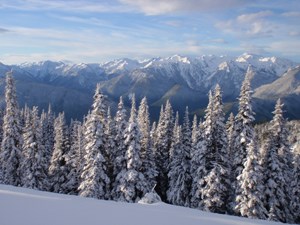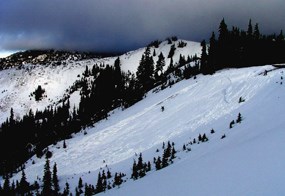
NPS Bryan Bell Mtn. Weather Forecast
If you're planning to visit the Olympic Wilderness during the fall, winter or spring, be prepared for inclement weather. You may encounter heavy rains, snow, high winds, mud, swollen creeks and rivers as well as deep puddles. Always check the latest forecasts before you head out. Also keep in mind that forecasts can be wrong. Be your own forecaster by watching the weather closely! On the coast, storms can make beach hiking hazardous and even impossible due to large waves. Coastal streams that are normally easy to cross can be waist deep or deeper during storms. Always carry the 10 Essentials: map, compass, flashlight, knife, matches, nylon cord, extra food and water, and raingear with warm clothes. Let someone know where and when you are taking your hike. Make emergency plans for them to follow if you do not return. High Country Preparation Camping On Snow Winter Camping at Hurricane Ridge
Human Waste 
Avalanche Hazards If you plan to travel in the park during winter or spring, learn more about avalanches and avalanche rescue from the Northwest Avalanche Center. Valley Precautions Footbridges often wash out. Standing water in trails can be ankle deep for long stretches. Temperatures commonly range between 30 to 40 degrees F. They can drop lower, but between 30 and 40 degrees, precipitation comes as cold rain, even more dangerous than snow. During spring snowmelt, the safest time to cross mountain streams is from sunrise to noon. After noon, melting snow water will increase flows until nightfall. Ski and Snowshoe Trails Other Off-Season Trails Lower elevation hikes include: Skokomish River Trail, Elwha River Trail, Humes Ranch - Rica Canyon Loop, Ozette Loop, Hoh River Trail. See the Olympic Wilderness Trip Planner page for more information on trails. |
Last updated: November 26, 2025
